If salads aren't your go-to lunch option—or if you're simply tired of them—there's good news: the world is full of exciting, quick alternatives that are both satisfying and delicious.
Whether it's because of a dietary restriction, a genuine dislike for green leaves, or you're just craving new flavors, there are countless ways to fill the salad void with scrumptious meals that are just as healthy and easy to prepare. Imagine wraps bursting with taste, grain bowls that are colorful and wholesome, or even protein-rich dishes that keep your taste buds thrilled and your belly full.
In this exploration, we'll delve into options that are quick to assemble and rich in flavor, ensuring every lunch break is an opportunity to enjoy something fresh and delightful.
- Reasons to Avoid Salads
- Wraps and Sandwich Alternatives
- Grain Bowls and Their Varieties
- Protein-Packed Lunch Ideas
- Healthy Pasta and Noodle Dishes
- Tips for Preparing Quick, Nutritious Meals
Reasons to Avoid Salads
There are moments when the idea of a leafy salad just doesn't hit the spot, and that’s entirely understandable. While salads are often touted as a healthy and easy lunch choice, they aren't suitable for everyone. For some, dietary restrictions such as allergies to certain vegetables or dressings can make salads not just inconvenient but potentially harmful. A person with a sensitivity to raw vegetables, for instance, might find salads particularly difficult to digest, causing discomfort rather than nourishment.
Another common reason why people steer clear of salads is the monotony they might feel from repeated consumption. Eating the same combination of greens, tomatoes, and cucumbers day in and day out can lead to “salad fatigue.” This is where the desire for variety becomes an essential factor in maintaining a satisfactory and more interesting diet. Having a rotational diet not only keeps meals exciting but also ensures a broader intake of nutrients.
A study by the British Nutrition Foundation suggests, "Variety in fruits and vegetables is crucial for adequate nutrition as different colors and types offer different essential nutrients."
Some individuals also find that salads just don’t fill them up, particularly those who have more active lifestyles or heightened energy requirements. Without enough protein or carbohydrates, a salad might leave a person hungry just a few hours later. In such cases, options like wraps or grain bowls, which offer more substantial and balanced nutrition, can be more beneficial.
| Salad Alternative | Main Benefit |
|---|---|
| Wraps | More filling with proteins and carbs |
| Grain Bowls | Variety of textures and nutrients |
Lastly, it’s important to remember the time factor. Not everyone has the luxury of time to meticulously chop vegetables for a perfect leafy concoction. Quick lunch ideas such as sandwiches or noodles can be swiftly crafted without sacrificing the joys of good taste. In our fast-paced world, convenience often ranks high in meal planning priorities. Opting for something faster but equally nutritious can significantly lift lunchtime efficiency for those on tight schedules or with limited kitchen facilities.
Wraps and Sandwich Alternatives
Lunch can often feel like a repetitive affair of salads or boring sandwiches, but wraps and their delicious counterparts bring a refreshing diversity to the table. Wraps, with their practical and portable nature, allow for a fusion of tastes and textures that a salad bowl could seldom achieve. The key is in imagining them as a blank canvas—ready to be filled with layers of dynamic ingredients. From the type of wrap itself—think tortillas, naan, or even lettuce leaves for a low-carb twist—to the fillings that tell a global story on your plate. Start with a base of high-quality protein like grilled chicken, spiced chickpeas, or even grilled tofu. Not only do these provide the necessary fuel to power through the day, but they also brace for an explosion of flavor once paired with fresh veggies, creamy sauces, and tangy dressings.
One cannot overstate the versatility these alternatives offer. Take, for instance, the Middle Eastern-inspired chicken shawarma wrap, which brings together spiced chicken with crunchy pickled vegetables, drizzled with a cool tahini sauce—all snugly wrapped in warm pita bread. Such combinations aren't just robust in flavor; they are rich in enticing aromas and hearty enough to keep one satisfied until dinner. For a vegetarian slant, the classic falafel wrap stands in contention, with its golden, herby patties providing a perfect contrast to the tang of fresh tabbouleh and zesty garlic sauce. These wraps step in to fulfill nutritional needs without losing their charm.
According to a study published by the British Nutrition Foundation, dishes that incorporate a variety of textures and flavors, as found in wraps, can significantly enhance meal satisfaction. This, again, highlights the ingenious variety these wraps offer—not just to taste but also to nutrition. Healthy eating isn't meant to be monotonous; wraps encourage creativity and flexibility, ensuring meals are inspiring rather than a chore. The healthy fats from avocados or tahini, the crunch from slaw or sprouts, and the spice from harissa or soy sauce, each add layers of dimension that excite the taste buds while nourishing the body.
And let's not forget the ease with which these can be prepared. A well-stocked pantry—or even some thoughtful leftovers—can make assembling a wrap a 5-minute affair, perfect for a quick lunch idea. For those in a time-crunch, prepping ingredients beforehand and storing them in the fridge means that assembling a flavorful lunch becomes a breeze. Whether you enjoy a medley of Mediterranean veggies or opt for a Thai-inspired peanut chicken wrap, the world of quick lunch ideas becomes infinitely more exciting. Wraps offer a gateway to explore global cuisines without leaving your kitchen, all while ensuring your lunches are hassle-free and delightful.
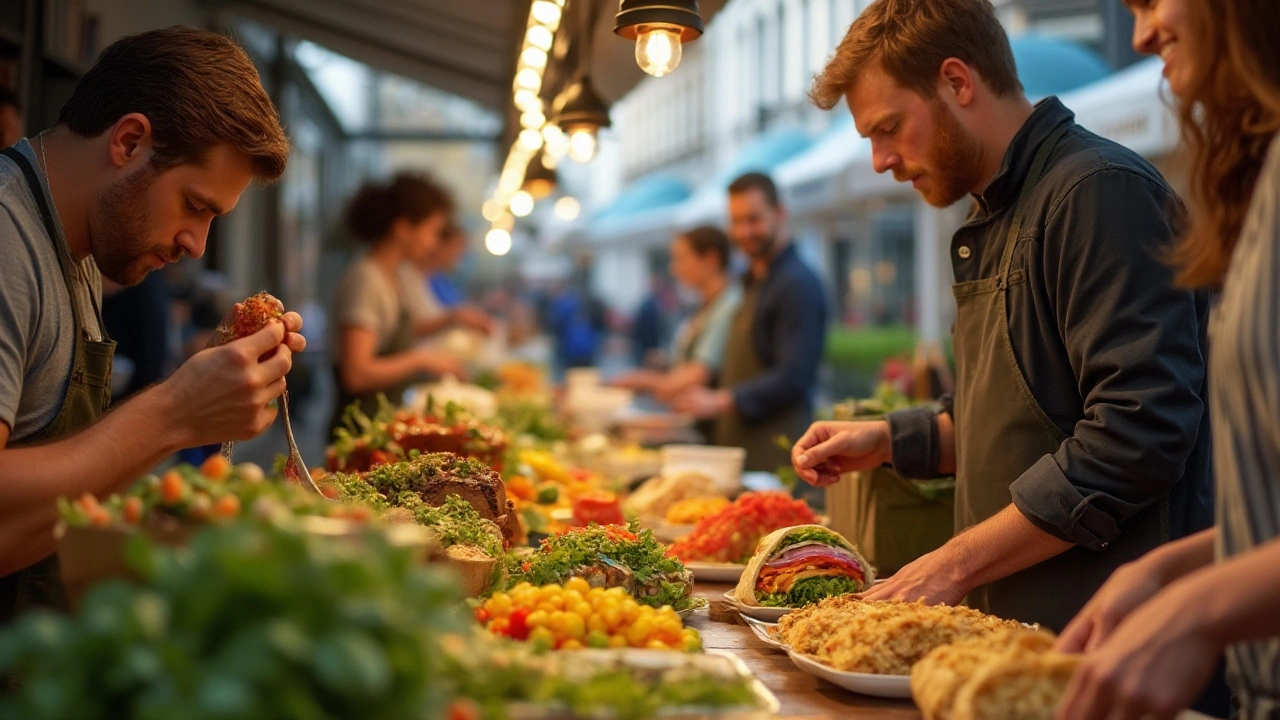
Grain Bowls and Their Varieties
Grain bowls have rapidly become a beloved choice for those seeking balanced and visually appealing meals. These bowls are an excellent alternative to traditional salads and offer a versatile base for creativity and flavor exploration. Typically, they start with a satisfying foundation of grains such as quinoa, brown rice, or farro, each bringing its unique taste and texture. These grains are renowned not only for their health benefits but also for their ability to keep you full and energized throughout a hectic afternoon. Quinoa, for instance, is a powerhouse of protein, making it an ideal choice for vegetarians and vegans, whereas farro, with its chewy consistency, offers a rustic, satisfying bite. Brown rice, on the other hand, is a staple that pairs well with a wide array of ingredients, providing a nutty base that's full of fiber.
Beyond grains, what really sets these bowls apart is what you choose to add. Start layering with a variety of colorful vegetables for that needed burst of vitamins and antioxidants. Consider roasted sweet potatoes, blistered cherry tomatoes, or lightly sautéed greens like kale and spinach for an earthy touch. Investing time in preparing these veggies not only enhances the taste but also adds essential nutrients. A sprinkle of seeds like chia or flax can introduce an omega-3 boost, essential for maintaining heart health. For those who crave a bit of protein, grilled chicken, marinated tofu, or roasted chickpeas can be superb choices. These additions elevate the grain bowl from simple to satiating and substantial, making it a true lunch-time hero.
Exploring Flavor Profiles
Exploring different flavor profiles is another thrilling aspect of creating grain bowls. The dressing can transform your dish from ordinary to extraordinary. Imagine a spicy sriracha drizzle for those who favor heat, or a cooling tzatziki sauce to offer a refreshing contrast. Perhaps an avocado-lime dressing appeals to your zest for something bright and tangy. These dressings can be concocted at home with minimal ingredients yet have the power to uplift the whole meal to a gourmet experience. Experimenting with global flavors can also enhance your grain bowl repertoire; try a Thai-inspired combo with peanut sauce or a Mediterranean theme with hummus and olives.Factoring in Nutritional Needs
When considering nutritional needs, it's wise to plan your grain bowls with a balanced macronutrient composition. A rule of thumb for a nourishing bowl includes a third of complex carbohydrates, a third of lean proteins, and a third of fibrous vegetables. For example, combine brown rice with black beans and roasted peppers for a synergistic balance of nutrients."Eating a wide range of grains can diversify your diet and ensure a broader spectrum of nutritional intake," advises nutritionist Jessica Wright.To top it all off, don't shy away from a handful of nuts or seeds for that crucial crunch and healthy fats. Consider almonds, walnuts, or sunflower seeds to introduce these elements into your bowl.
Not only are grain bowls a feast for the taste buds, but they also offer an opportunity to delve into the world of meal prepping. Preparing your favorite grain bowl ingredients in bulk can save considerable time during the week while ensuring a wholesome meal is always within easy reach. Simply cook the grains, prepare your chosen vegetables and protein, and store them separately. When lunch calls, assemble your personalized bowl in a matter of minutes. With such diverse possibilities, exploring the grain bowl world can keep your lunches lively, nutritious, and most importantly, free from the monotony of everyday salads.
Protein-Packed Lunch Ideas
There's something deeply satisfying about indulging in a meal that's rich in protein, especially when you know it's fueling your energy reserves for the day. Protein is a powerhouse when it comes to nutrients, playing a crucial role in muscle building, energy supply, and keeping you feeling fuller for longer. So, what can you whip up for a quick lunch that is as tasty as it is nourishing? The options are more diverse than you might think. Consider crafting a delicious quinoa salad – minus the leafy greens – bursting with the goodness of black beans, corn, cherry tomatoes, and a sprinkle of feta cheese. All you need to do is prepare your quinoa in advance, mix in the veggies and beans, and dress it up with a light lime vinaigrette for a refreshing twist on the classic salad. This dish does not only pack a protein punch but also a vibrant flavor that's hard to resist.
Let's dive into beloved classics: sandwiches and wraps. Although they might not sound like the epitome of excitement initially, with some creativity, they can be transformed into quick lunch ideas that are both fulfilling and fun. Imagine a whole wheat wrap filled with grilled chicken, hummus, shredded carrots, cucumber, and a sprinkle of alfalfa sprouts for that satisfying crunch. It's not just the protein from the chicken that gives this meal its power; the addition of wholesome veggies and legumes takes it a notch higher. And if you're mindful about keeping things zesty, why not add a dollop of tzatziki sauce for a Mediterranean-inspired feast? The combinations are endless, allowing you to mix and match ingredients according to your palate and pantry supplies.
Meanwhile, we mustn't overlook the timeless appeal of egg-based dishes. A quick frittata loaded with spinach, bell peppers, and a hint of cheese can be a great alternative to salads, serving as a rich source of protein and vitamins. Eggs are incredibly versatile, and making a small batch of muffin-sized frittatas in advance can mean you’ve got a quick grab-and-go option ready anytime hunger strikes. To add a layer of complexity, toss in some smoked salmon or lean turkey slices for an extra layer of flavor and protein boost. And since we're talking about salmons, a quick grill of this fatty fish with a side of asparagus can be just as filling as your typical lunch, if not more. A drizzle of lemon juice and a pinch of dill can transform this simple dish into something exquisite. To quote the renowned nutrition expert Marion Nestle, "Eating a balanced diet rich in essential nutrients not only fuels your body but elevates your overall well-being."
If numbers and stats capture your interest, consider this: a single cup of cooked lentils contains about 18 grams of protein, which is nearly the same amount found in some fish or poultry servings. It's substantial, especially for those who are exploring vegetarian or vegan lifestyles. A hearty lentil soup or stew can warm you up on a chilly day and keep you full, too. Cooking it with a mix of spices like cumin and coriander not only enhances its flavor but also keeps it nutritious and dense. Creating a weekly meal plan that incorporates these protein-rich ideas can significantly help maintain balanced nutrition and energy levels, catering to various dietary preferences without the reliance on traditional salads.
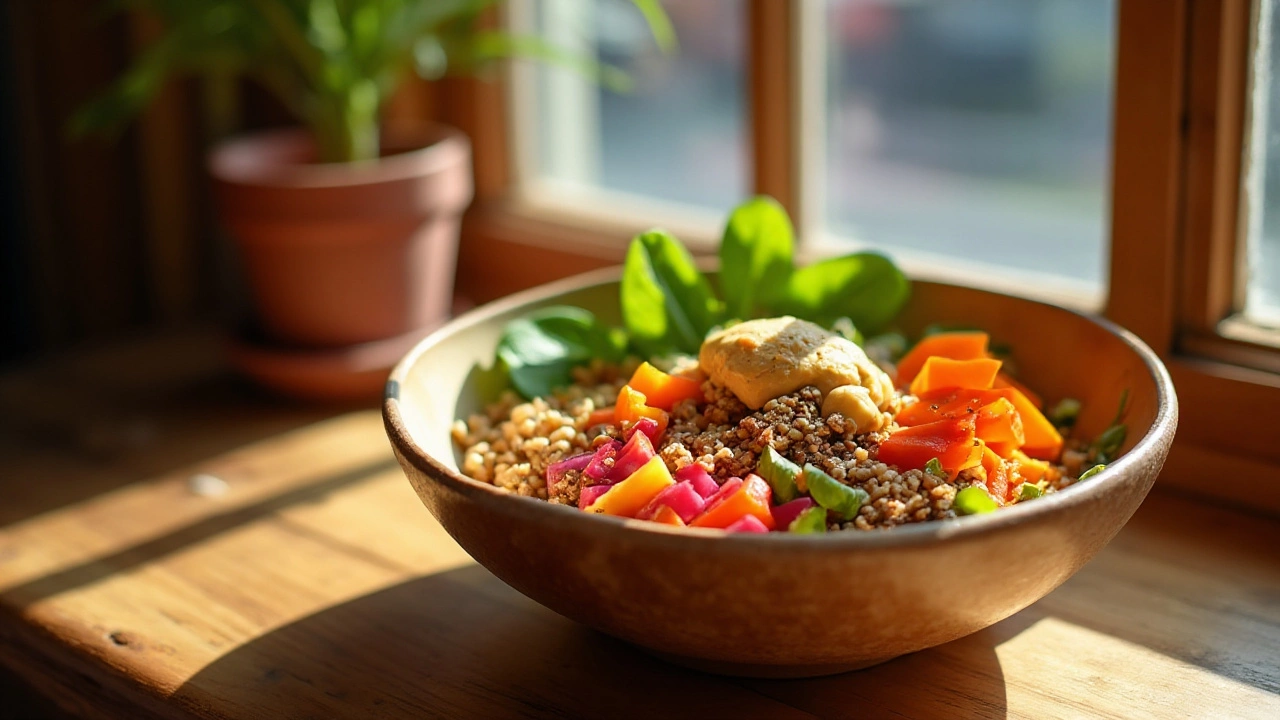
Healthy Pasta and Noodle Dishes
For many, pasta and noodles are synonymous with comfort and indulgence. Yet, they can also be the cornerstone of a healthy diet, especially when you make thoughtful choices about the ingredients. A key to transforming these dishes into healthier options lies in the selection of the base—those noodles that hold everything together just so. Opt for whole grain pastas, which pack more fiber and nutrients than their refined counterparts. This simple swap not only improves the nutritional profile but also adds a pleasant nuttiness to your meals, complementing a wide variety of sauces and add-ins. Alternatively, adventurous eaters might enjoy experimenting with legume-based pastas, such as chickpea or lentil varieties, which are wonderful for bringing protein-rich benefits to your dish, making them a perfect fit for anyone avoiding animal proteins.
Pasta dishes are often synonymous with creamy, calorie-laden sauces, but there are healthier options that don't skimp on taste. Tomato-based sauces can be a brilliant choice, especially when you make them at home using fresh tomatoes, garlic, and herbs. This allows for control over the salt and sugar content, making the dish a more heart-friendly option. Also consider pesto, which can be rich in flavor and nutrients if made with fresh basil, olive oil, and nuts. And speaking of sauces, let's not overlook the potential of Asian noodle dishes, where light soy or tamari, combined with ginger and garlic, can lift the flavor profile and deliver that coveted umami satisfaction.
Integrating vegetables into your pasta or noodle dishes is not only an excellent way to add nutrients but also taste and texture. Think of vibrant greens like spinach or kale, which meld beautifully with pasta when sautéed quickly, or the crisp bite of bell peppers and zucchini slices. These vegetables contribute not only fiber and vitamins but also make the dish visually appealing, increasing the enjoyment of the meal. The use of vegetables can also be an innovative way to reduce the noodle quantity, offering a more balanced meal. A bowl of noodles alongside a medley of colorful vegetables can be as tantalizing for the eyes as for the palate, encouraging a balanced approach to eating.
Choosing the right protein can elevate your healthy pasta and noodle dishes to another level of satisfaction. Lean proteins like grilled chicken, prawns, or tofu can round out the nutritional profile, making the dish complete and fulfilling. For an extra burst of flavor, consider marinating your choice of protein in herbs and lemon juice before cooking, which can infuse the food with freshness and a little zing. Quoting nutrition expert Marion Nestle, who once said,
"The basic principles of healthy eating are simple and sensible: eat plenty of vegetables, fruits, protein, whole grains, and healthy fats, and enjoy your pasta."Her insights remind us that balance is key and that pasta dishes, with the right ingredients, can definitely fit into a healthy lifestyle.
Finally, don't be afraid to create an all-in-one sauce to drive flavor deep into the noodles themselves. An exciting option is to blend roasted red peppers with almonds and olive oil—the result is a creamy, colorful sauce that envelops each strand beautifully. Add a sprinkle of parmesan or nutritional yeast for a dose of rich umami, boosting not only the taste but also the nutritional value. And if you wish to make your meals even more nutritious, try a sprinkle of seeds, like chia or pumpkin, on top as a garnish. They're rich in micronutrients and can add a delightful crunch to each bite without overpowering the dish's natural flavors.
Tips for Preparing Quick, Nutritious Meals
Let's be honest, the day-to-day hustle often demands lunch options that don't require hours in the kitchen. Yet, balancing quickness with nutrition can seem like tightrope walking. So, what can you do to prepare meals that are both speedy and nourishing? It all starts with smart planning and a few handy tricks up your sleeve. One key approach is having staple ingredients ready to go. Consider keeping a variety of quick lunch ideas essentials like quinoa, brown rice, or whole-grain wraps in your pantry. They form a sturdy base for a myriad of meals, providing complex carbohydrates that keep you energized throughout the afternoon.
Protein is another crucial component for nutritious meals that doesn't have to complicate your cooking process. Pre-cooked chicken, canned tuna, or boiled eggs can effortlessly elevate any dish, transforming it into a powerhouse of energy and satiety. A few slices of tofu or tempeh can offer plant-based protein for those inclined towards a vegetarian diet. Pair these proteins with a mix of fresh or roasted vegetables for added vitamins and minerals, keeping your meal both colorful and fulfilling. Don't shy away from boosting flavors with herbs and spices—these are calorie-free ticket to a tasty meal.
Now, moving on to those delightful moments where flavor and nourishment meet convenience. Did you know the Mediterranean diet, often celebrated for its positive health outcomes, emphasizes easy-to-assemble dishes?
"The Mediterranean diet is not just feasible for daily living; it's an ode to both health and great taste," notes nutritionist Dr. Olivia Watson.Taking inspiration, olive oil, tomatoes, and crushed garlic can turn a simple bowl of couscous into a gourmet meal in minutes. Remember, a sprinkle of seeds like chia or flax adds a fantastic crunch and ups your omega-3 fatty acids, known for supporting heart health.
Incorporating gadgets into your kitchen routine can drastically cut down preparation time as well. Devices like a rice cooker or a blender are fantastic for creating deeply satisfying meals without much supervision. A rice cooker can do more than cook grains; it can slow-cook and steam, transforming humble ingredients into delightful dishes. Meanwhile, blenders aren't just for smoothies. Use them to whip up protein-rich hummus or a quick tomato soup. Multitasking these tools revolutionizes your approach to creating meals.
Lastly, a little prep work can make a big difference. Dedicate an hour on the weekend to prepare a few key items for your week. Chop vegetables, marinate proteins or make batches of grains. Having these ready can mean the difference between a hastily assembled bowl of leftovers and a thoughtfully created healthy eating experience. This small investment of time can ensure each meal is not only quick but also something to look forward to.
Quick, nutritious meals aren't out of reach—they're well within grasping if you rethink how you approach your kitchen. Whether it’s planning ahead, keeping key ingredients stocked, or leveraging technology, your journey toward better lunch habits is about enjoying the process and the taste without the sacrifice of your time or dietary goals.
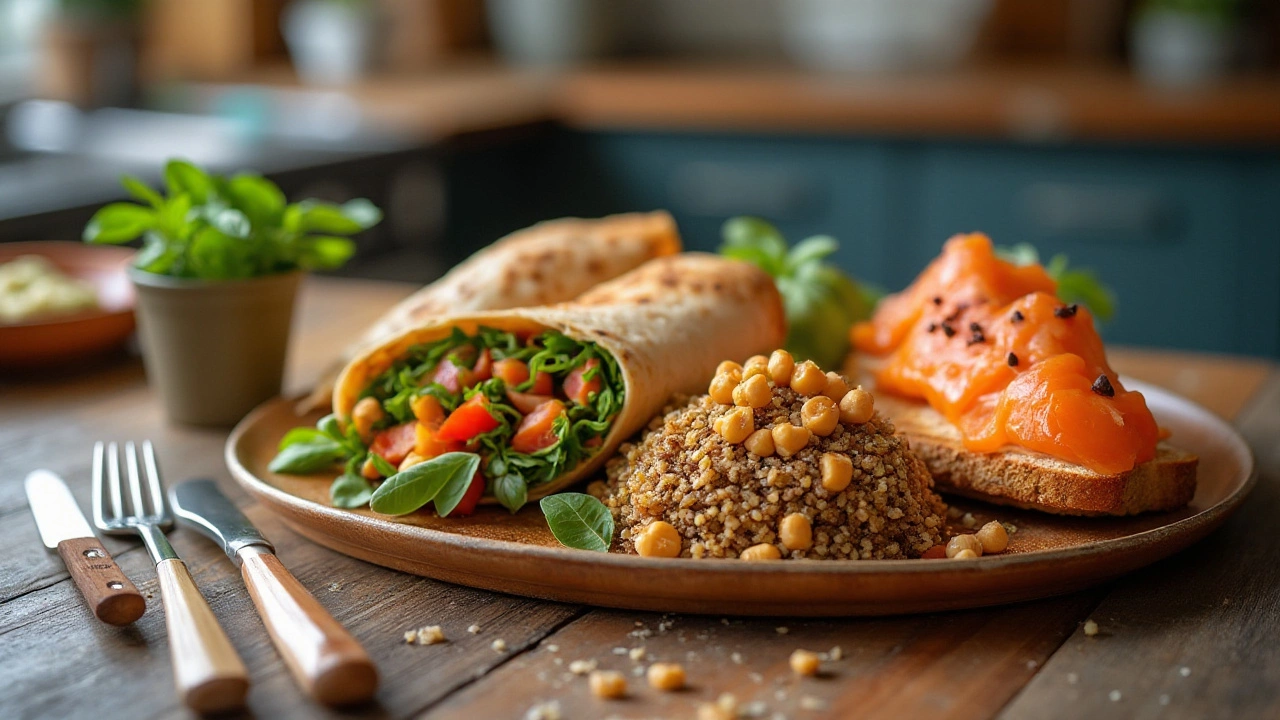

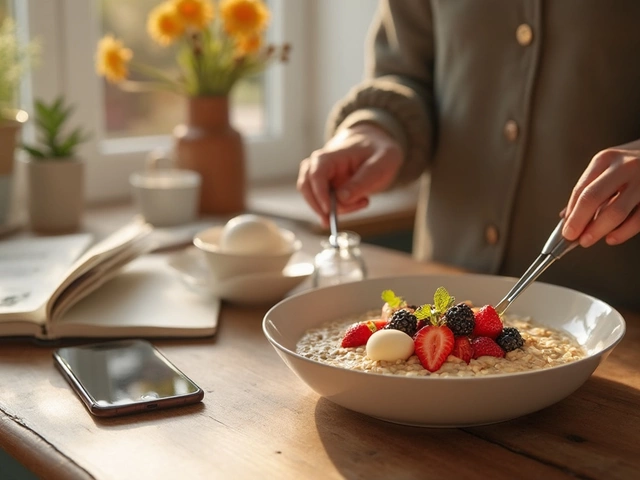
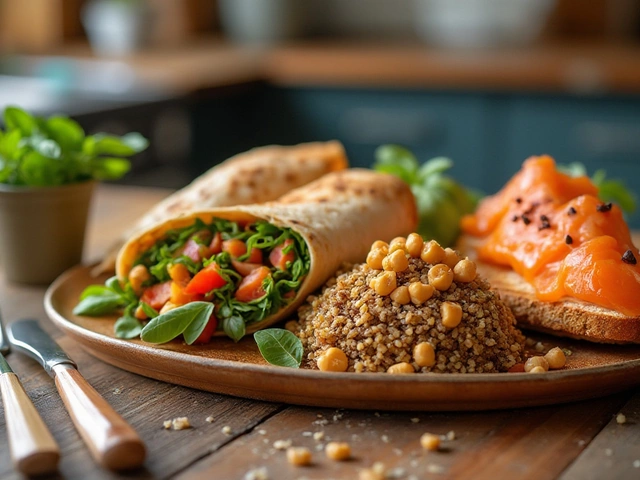

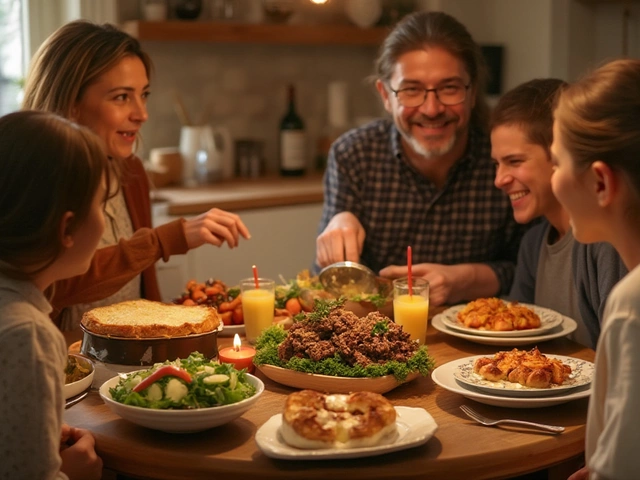
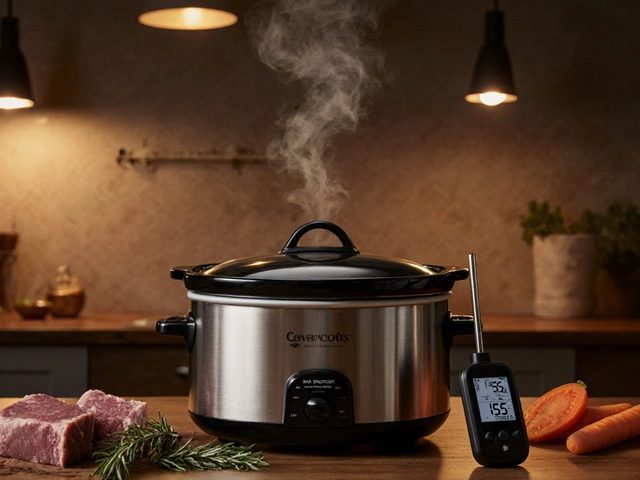
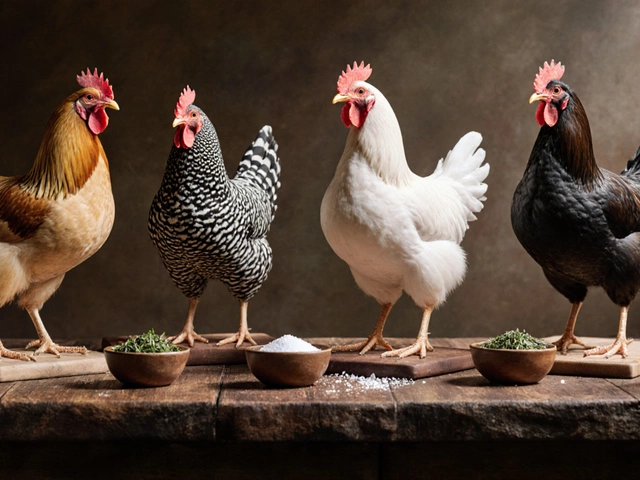
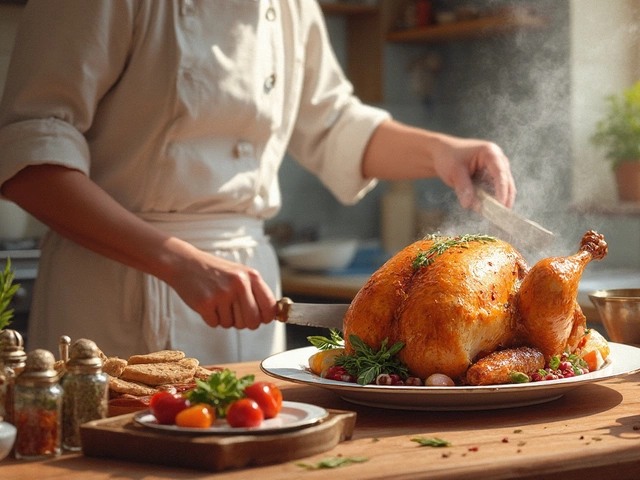
Write a comment